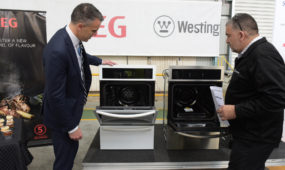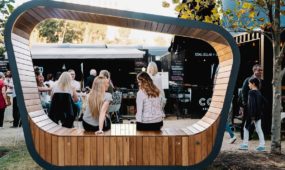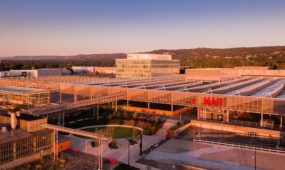Millicent Mill sets best practice for global company
Manufacturing
Manufacturing benchmarks achieved by a rural South Australian factory are being shared and instituted across the world by global manufacturing giant Kimberly-Clark.

Sign up to receive notifications about new stories in this category.
Thank you for subscribing to story notifications.
Based in Mount Gambier in the state’s southeast, the Millicent Mill produces 85,0000 tons of tissue paper each year for the New Zealand and Australia markets.
We have to be smarter and better than our local and global competitors given the cost of labor, energy and transport to get raw materials to the mill and finished product to market.
Recent state-of-the art additions include a co-generation plant, improvement of waste-water quality and introduction of Automated Guided Vehicles (AGVs), all of which have provided the necessary efficiency and productivity advances to compete successfully on the manufacturing world stage.
“It is tough being a manufacturer in Australia at the moment,’’ Millicent Mill manager Scott Whicker said.
“We have to be smarter and better than our local and global competitors given the cost of labor, energy and transport to get raw materials to the mill and finished product to market. Some of the things we have been doing here in Millicent are being copied by Kimberley-Clark factories around the world, providing best practice outcomes.’’
The $33 million co-generation plant uses clean gas to power a turbine engine to generate electricity for the entire factory. The plant replaced an ageing gas-fired boiler and now all of the mill’s steam requirements are provided by the exhaust heat of the turbine engine.
The plant has effectively taken the mill off the local electricity grid as it generates over 90 per cent of the mill’s electrical load.
It has provided significant savings in energy costs as well as reducing the carbon footprint of the factory, eliminating 80,000 tons of carbon dioxide emissions annually.
The factory’s waste-water improvements was also recently lauded by the South Australian Environment Protection Authority which stated the quality of water included a 95 per cent reduction in phosphorous load and 89 per cent reduction in nitrogen levels.
A $2.5 million investment in AGV’s replaced manned forklifts in the distribution centre.
They cope with the task of shuffling more than 2000 pallets per day in and out of the 26,000 pallet, high-rise Automated Storage and Retrieval System (ASRS) warehouse using rotating laser Global Positioning Systems. On average the mill dispatches around 26 B-double trucks of product each day.
“While we have to look at our operations from a financial perspective we also have a set of sustainability goals that we strive to meet,’’ Whicker said.
“The new techniques we have employed at the Millicent Mill are setting new benchmarks and are being adopted or adapted for use in other Kimberly-Clark factories around the world.’’
“The efficiencies are something we aim to continuously improve on so we can stay ahead of the game and allows us to keep manufacturing here in South Australia.’’
Jump to next article



